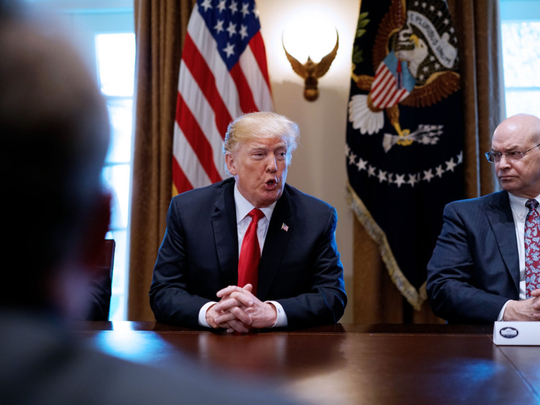
At first glance, US President Donald Trump’s new tariffs on steel and aluminium may look like a repetition of one of former president George W. Bush’s mistakes. Bush also imposed tariffs on steel in his second year in office and, like Trump, did it in part to keep a campaign promise he considered helpful in the rust belt.
Bush’s tariffs are generally thought to have backfired. The tariffs raised costs for steel-using industries, which employ more people and contribute more to the economy than the steel industry itself. They also drew retaliatory tariffs from other countries against American exports. Bush withdrew them in late 2003.
The results of Trump’s tariffs could be worse. The steel industry is smaller now than it was in 2002, suggesting there will be even more workers who lose out from the tariffs than who win from them. Trump is vowing that his tariffs will be in place for a long time, unlike Bush’s.
But the biggest difference between Trump’s tariffs and Bush’s is their context. Bush’s action fit into a bipartisan tradition that began after the Great Depression. Presidents from that point onward sought to liberalise trade overall, but had to buy support for that agenda from a more reluctant Congress.
Many of US trade policies are built on the assumption that Congressmen would tend to seek protection for local businesses, while presidents would fight for the national interest in open trade. So presidents would impose tariffs and other trade barriers to appease Congressional protectionists while freeing trade generally. Fairly often, it was the steel industry that received protection from these pro-trade presidents.
Role reversal
Bush, like his predecessors, wanted to enact new free-trade agreements. In December 2001, the House passed a bill to enable him to negotiate trade agreements with a one-vote margin. Bush would probably not have been able to win that vote without saying that his promised steel protection was on the way. Bush’s trade representative, Robert Zoellick, explicitly stated that the steel tariffs of 2002-3 were necessary for any progress on trade agreements.
Trump isn’t trying to placate Congressmen who want protectionism in the immediate aftermath of an economic slump. Congress is wary of the president’s tariffs — a role reversal from the postwar norm. Trump isn’t pursuing a broader agenda of freer trade. He’s not trying to get any pro-trade legislation through Congress. He has said time and time again that the post-war trade policies of both parties have been ruinous for the country. He is seeking to renegotiate existing trade agreements and sometimes talks about tearing them up. Trump tweets that under today’s circumstances, “trade wars are good, and easy to win” — words that neither Bush nor any other post-Second World War president would have said.
So while the tactic Trump is using — imposing steel tariffs — is familiar, Trump’s trade strategy is entirely different. That’s why, for those who recognise that postwar trade policy has been enormously beneficial for the American and world economy, Trump’s promised steel tariffs are much more ominous than their predecessors.
— Bloomberg
Ramesh Ponnuru is a Bloomberg View columnist. He is a senior editor at National Review, visiting fellow at the American Enterprise Institute and contributor to CBS News.











